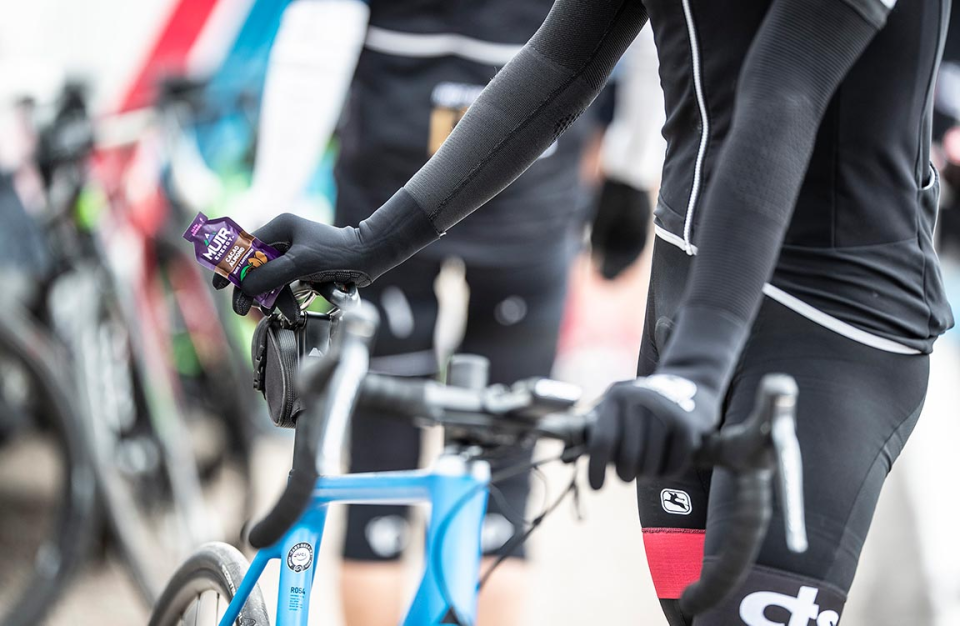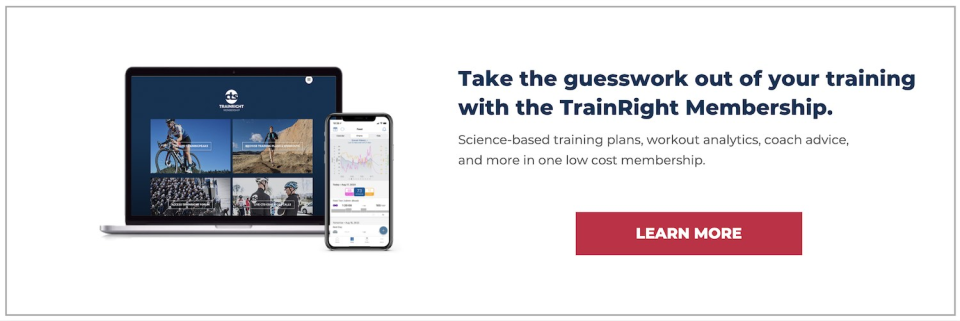Winter Cycling: Training Outdoors Effectively, Safely, and Comfortably
Winter cycling takes a bit more planning and thought compared to throwing on a pair of bibs and a jersey in the summer, but once you get some routines and habits dialed you will find winter cycling can be fun, invigorating, and rewarding
So, rather than retreating to the ‘pain cave’ for the next few months, use the following guide to get the most out of outdoor cycling through the winter.

Winter Cycling Clothing
With the right clothing decisions you can ride comfortably in almost any weather conditions. The key to comfort during winter cycling is striking a balance between insulation and breathability. You need the insulation to hang on to your body heat, but your clothing must be breathable so sweat and moisture don’t build up close to your skin.
Layers for managing upper body warmth
There are three main aspects to layering: wicking moisture away you’re your skin, providing insulation to retain heat, and creating a barrier against wind and water. A warm, form-fitting base layer is a winter cycling essential, like these long-sleeved tech fabric or merino wool examples from Giordana. Your next layer should be for insulation, like a long-sleeved merino wool jersey or a fleece-lined thermal jersey. If the weather is sunny, mildly cold, and relatively calm, a base layer and thermal jersey may be all you need. If you need protection from wind or water, add barrier layer on top. This can be as simple as a wind jacket or as robust as a full weatherproof, thermal jacket. CTS has worked with Giordana for a long time, and their FR-C Pro Lyte jacket is a personal favorite.
The beauty of layers is that you can adjust the amount of cold air you let in and heat you let out by opening zippers and vents or adding and removing layers. Here are some things to keep in mind when choosing and adjusting layers:
- Unzip or open vents on longer climbs. You don’t want to overheat and sweat profusely as you work hard on a climb, because moisture that builds up in your layers will chill you on the descent or when you start moving faster on flat ground.
- Carry a barrier layer if you expect temperatures to drop. This could be because the sun is going down in the afternoon, you’re going to be returning into a headwind, or you’re climbing first and then descending to get home. Honestly, carrying a thin barrier layer is always good as an insurance policy. I carry a rain jacket because it packs small and provides protection from wind or water if I need either.
- Find the right fit. Staying warm and dry is a matter of managing the airspace around your body. You want a form-fitting base layer, but your insulation layer should fit close to your body but neither so tight that the fabric is compressed nor so loose that you’re trying to heat empty air space. Similarly, your barrier layer shouldn’t compress the layers beneath it, nor flap in the wind like a sail.
Keeping Hands, Head, and Feet Warm
If you can keep your head, hands, and feet warm, you can do long rides in cold weather in reasonable comfort. But when your head, hands, an/or feet are cold, your ride can quickly become miserable – even if your torso is nice and toasty. Here are some tried and true strategies for keeping these critical areas warm.
- Carry an extra set of gloves and hat. Your hat and gloves can get sweaty during climbs or in tailwinds, or just from exertion. Swapping them out for a dry set can make the next part of your ride – or the ride home – much more pleasant.
- Get the right fit. As with jerseys, insulating fabrics do their jobs better when they are not compressed. Gloves that are too tight or that have broken down over time will not be as warm. Thick socks crammed into cycling shoes won’t keep your feet warm.
- Protect your feet from the outside. You’re likely using the same cycling shoes in the winter as you did last summer, meaning they fit snugly with thin summer socks. There might be room for a thin wool sock, but in very cold conditions you’ll need windproof or insulated shoe covers for added warmth.
- Consider chemical warmers. Air-activated hand warmers can provide an additional level of protection from the cold. They may be too warm to put directly in contact with your skin, though, so try them between your insole and sock, or between the top of your shoe and a shoe cover. Similarly, if using them for your hands, you may need a thin liner glove so you can put the warmer between the liner and the thicker glove.
- For bitter cold, consider bar mitts. There’s a reason they are standard equipment for ultraendurance cycling races in Alaska.
FREE 14 DAY MEMBERSHIP TRIAL
Gran Fondo Guide fans, click on the image above and get TrainRight Membership for a 14 day no obligation trial. TrainRight Membership comes with a 30-day money-back guarantee!
Winter Cycling Equipment
Once your body is ready for winter, it’s time to get your bike ready for winter cycling. Depending on where you live, winter can be hard on bikes because of wet conditions or increased road grime from antiskid or de-icing measures. Consider these equipment modifications for winter:
- Add lights. If you’re not already riding with front and rear blinking lights, start now and leave them on all year. Bright colored and reflective clothing may also help, but keep in mind that none of these attempts at improving visibility can solve the problem of inattentive or aggressive drivers.
- Get a frame or handlebar bag. I must admit, I resisted anything more than a saddle bag for a long time, but they really do make life better. Instead of uncomfortably stuffing your jersey pockets with clothes, stow them in a frame or bar bag. It allows you to take the best pieces of clothing for the day, not just the ones you can cram into your pockets.
- Get fenders. One day last winter I went out for a ride, excited to get back on the road after a recent snowstorm. I forgot about the snowmelt, though, and although the air temperature was in the 50s, I was quickly freezing from the spray coming off my tires.
- Winterize your bike. Because winter conditions can be harder on components, I typically transition to wider, thicker tires for the winter, along with mid-range cassettes and chains. They’re a bit heavier, but perfectly good for training. Of course, with the supply shortages these days, you might have to grab whatever cassettes, chains, and brake pads you can find.
- Invest in cleaning equipment. Keeping your bike clean will go a long way to reducing wear and tear on drivetrain components. The road grit on your chain and cassette acts like a sanding compound, so invest in brushes, rags, and degreaser and make cleaning a regular part of your routine. If you don’t have access to an outdoor hose because it’s winter, get a pump sprayer from the local home and garden store.
Winter Cycling Training Strategies
Being bundled up like the Michelin Man can definitely put a damper on a cyclist’s enthusiasm for interval training, but with some modifications to your routines you can keep your training on track.
- Get a good warmup before intervals. It may take you longer to feel ready for hard efforts than it did during warmer weather.
- Do interval work early in the ride. In winter, many workouts will include some moderate or intense intervals within a longer endurance ride. When it’s cold out, do the intervals early, not only because that’s when you are freshest but also in case you need to cut the ride short because of the cold.
- Do intervals indoors and endurance outdoors. The trainer is a great option for interval workouts because you can control the environment completely. With a smart trainer you can even use ergometer mode to nail the target power for every effort. On other days you can bundle up for a moderate EnduranceMiles (Zone 2) ride outdoors.
- Don’t spend too much time checking the weather. Just get dressed and go. Too many cyclists waste time agonizing over the weather. With practice you’ll get a good sense for what gear to use for specific temperature ranges, but to get there you have to get out more often! This is another reason I recommend a frame or bar bag. You can keep it on the bike, stocked with extra layers in case you need them.
- Don’t forget to eat and drink. You’re still sweating and working under those layers, so hydration and nutrition are still important in the winter. Your sweat rate will likely be lower than during the hottest days of summer, so you may not need as much fluid, but a bottle per hour is still a good starting point. Similarly, when cyclists are focused on how cold it is they sometimes forget to eat. Reaching for food is also more of a hassle with thick gloves and stuffed pockets, so sometimes during winter group rides it’s harder to find an opportunity to eat. And remember to keep solid foods like bars and chews close to your body so they stay soft enough to chew…
Perhaps the most important part of winter cycling is to keep doing it. As soon as an athlete’s mindset shift to skipping outdoor rides because it’s cold, their rate of compliance for all workouts – indoors or outdoors – starts to drop. The only ride you’re going to regret is the one you didn’t do, so grab your gear and get out there!
To find out more, please visit: https://trainright.com/winter-cycling-training-outdoors/
About CTS
As it has since 2000, Carmichael Training Systems leads the endurance coaching industry with proven and innovative products, services, and content. And the results speak for themselves; no other coaching company produces more champions, in such a wide variety of sports and age groups, than CTS.
For more information, please visit: https://trainright.com

